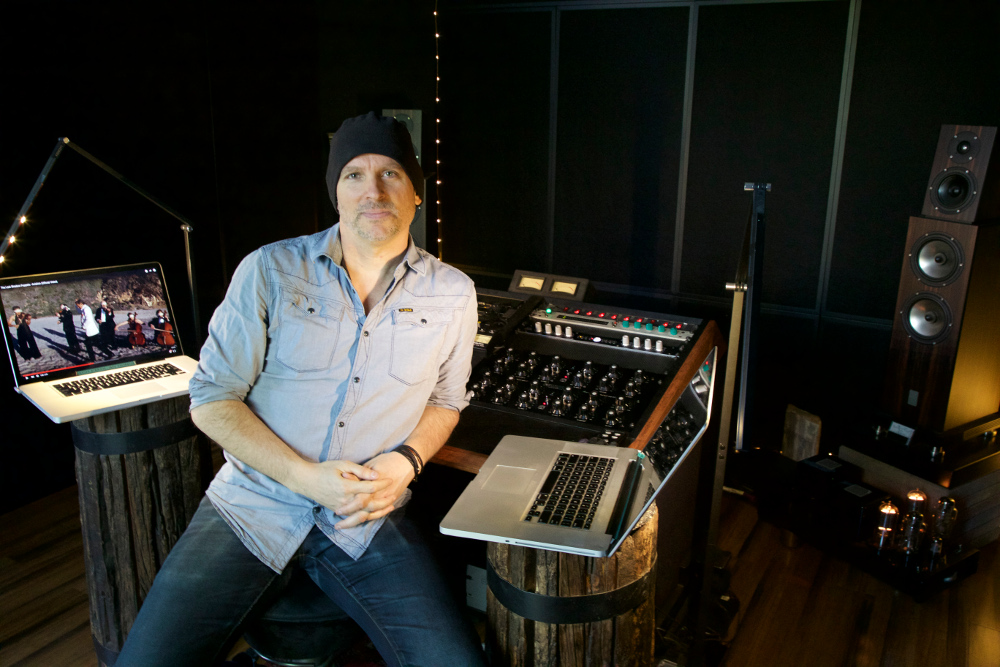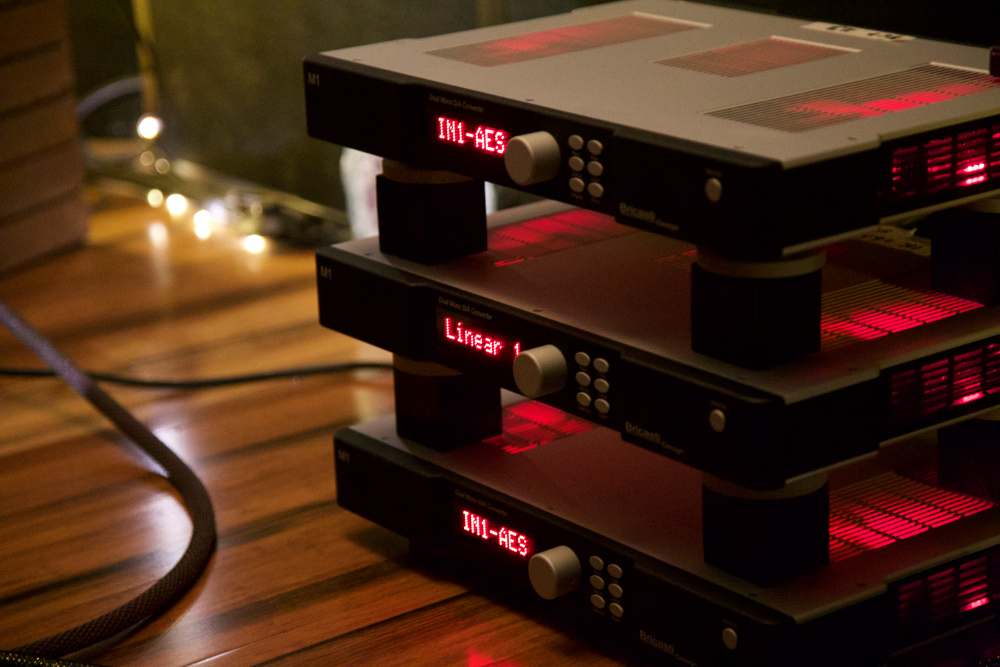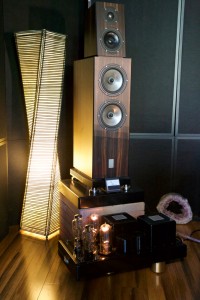Mastering Analysis: “Aviation” by The Last Shadow Puppets – Brian Lucey, Magic Garden Mastering
One supergroup deserves another.
On the artist side, you’ve got The Last Shadow Puppets. Made up of the Arctic Monkeys’ lead vocalist/guitarist/principal songwriter Alex Turner, and singer/guitarist Miles Kane, together with Simian composer/producer/drummer/keyboardist, James Ford, their rocked-up baroque pop resulted in 2008’s #1 debut album, Age Of The Understatement. Now arrives their next trip for the ears, Everything You’ve Come To Expect, (Domino), — TLSP’s first new album in eight years.
The pedigree of Everything is indeed prodigious. Recorded at Rick Rubin’s Shangri-la in Malibu, the record was mixed by the famed Tchad Blake (Crowded House, Suzanne Vega, Pearl Jam, U2). From there, the audio supergroup was completed by Brian Lucey of Magic Garden Mastering in Los Angeles, who had collaborated with Blake on The Black Keys, Arctic Monkeys, and The Arcs.
In this Mastering Analysis, Lucey reveals all about finishing “Aviation,” the mesmerizing first single from TLSP’s Everything. Why does this elite mastering engineer say, “No stems please” when files are delivered to his suite? When does he use compression, and when doesn’t he? What is his simple goal with mastering – and what is the powerful approach he takes to achieve it? How do you compile a truly effective reference list? What’s the difference between listening and hearing — and how does that lead to his priceless advice for mixers and mastering aficionados?
Don’t wait – feast your ears, eyes and brains on the below.

Brian Lucey in his LA lair — we assure you, he is most serious about the art of mastering.
Mastering Engineer Name: Brian Lucey
Mastering facility name, Website, and location: Magic Garden Mastering – Los Angeles. Located in Atwater Village. http://www.magicgardenmastering.com
Credits: Lucinda Williams “The Ghosts of Highway 20”, Ringo Starr Band “Benefit for David Lynch Foundation,” Cage the Elephant Tell Me I’m Pretty, Marilyn Manson The Pale Emperor, Ghost Mellora, Grace Potter Midnight, The Black Keys Brothers, El Camino and Turn Blue, Chet Faker Built on Glass, Dr. John Locked Down, Arctic Monkeys AM.
Artist and Song: The Last Shadow Puppets “Aviation” from the new album, Everything You’ve Come to Expect

Why They Mastered It With Me: That’s really a question for Domino, yet we are familiar teammates. Tchad Blake and I have worked together on The Arcs, Nikki Lane, Hanni El Khatib, Arctic Monkeys AM and The Kills’ new one coming out June 3rd (with mixes also from Tom Elmhirst).
Most notably we did The Black Keys’ last three records together. Domino is the label for Arctic Monkeys, The Kills and The Last Shadow Puppets. Great stuff from Tchad and Domino always.
The Gear I Hear With: The aim of my work is to enhance the connection between the artist and the listener, furthering the musicality and vision of the production team.
I need to do three things always: show respect, offer a clear upgrade to the work I was given, and be efficient. Efficiency is important so I stay in a good balance of fresh objectivity and emotional engagement. Mastering is not some kind of a science project for me, it’s not about perfection or homogeneity, it’s a flowing wave sculpture to connect people with each other. I’m shaping vibrations and thus the immediate and subconscious interpretation of each listener. People judge quickly, and they need to be won over. There is a balance between respect and going for it to be found, a balance that’s unique to each song or record.

Cary Audio: Amplified! Magic Garden’s Cary Audio 211 Mastering Edition (modified caps and tubes) 70W Class A push-pull monos.
The aim of all music is to uplift. Even with murder ballads or death metal. They want to be uplifted and moved emotionally, connected to the inspiration behind the production. They want to feel the artist in an energy that takes them away from their normal day to a better place. Music in that sense, from pop to jazz to classical to you name it, is a healing art, a complex language of style and sound punctuated in time. Yet there are simple human things that matter to everyone, style be damned. I’m working in that humanist world, the world of universal musicality. We music makers are fundamentally, altering the universe, one person at a time. My role in that process is to make the production moments before me invisible, no matter the ups and downs, ensuring the connection from artist to audience happens deeply, and fully, right now. And at best, in the distant future as well.
I see my studio less about gear pieces, and more as one instrument. The actual processing chain has changed very little in the last 15 years, although new power amps and new DA in the last six months are noteworthy. I use a 2009 17″ Mac Book Pro running Boot Camp and Sequoia. On some records I’ll use the internal phase linear EQ and occasionally deEssing on the way out to the analog chain.
Twenty two new old stock tubes fill the Fairman TMEQ, and that is blended with 60 upgraded Burr Brown ICs in the Focusrite Blue 315 mkII. This blend alters harmonics but shows respect. The tubes recess and the ICs bring it back forward. Subtle mid side processing, or clean compression, happens in the Elysia Alpha Ser #001 which can be employed subtly to enhance the power and clarity by shaping the low end or altering the punch.
Pacific Microsonics does the clipping and converting, L2 hardware is set at 01.4 to pop the vocal but not destroy the punch, and the HEDD 192 is used to add back some sparkle by rounding the squared waves. Tube amplification from the push pull class A Cary Audio 211 Mastering Edition is vibey and accurate both. Balance in all things, that’s the mastering way.
I monitor the mix, the processing, and also feed the analog chain with something new to me this year: three pairs of Bricasti M1 Special Edition D to A converters. They use the same DA chip as the Mytek 8×192 that I had used for years, but the filtering, power supplies and class A analog path are a bit better. One really cool thing about the M1 D to A, I can use a different filter for each record. There are two linear phase and two minimum phase that I like (out of the 15 filter options in the box), so it’s like having four very similar but definitely different DA in one. I did a track last week for Spike Stent where I used a linear phase filter in the V and a minimum phase in the CH. May never do that again, but it worked. Minimum phase is a faster and more modern sounding transient, good for a pop chorus in this case.

A triumvirate of Bricasti M1 Special Edition D/A.Converters is in bloom at Magic Garden.
Components: I prefer the team to send one mix per track, the one that makes the room light up — and sounds great in the car.
No stems please, and no vocal up/down etc. are needed by me. I want the singular mix vision, in whatever technical condition. It’s not a science project … we want to move people emotionally.
24-bit 44.1 kHz stereo mixes were delivered, with some revisions done as we went along. Tchad is a sweet guy, so creative and responsive. You can’t ask for more than that in a teammate.
First Listen: His mixes are always well-crafted with aggressive filtering, creative distortion and short ambient spaces for uniqueness. He has strong center channel and pans with passion. Tchad’s in-the-box chain is well known: Decapitator or Sans Amp on each of the channels and many limiters on the mix for color, not level.
Tchad’s mixes are strong, and easy to work with, this track is no exception. The vocal is where it needs to be, everything sounds like it’s been addressed, nothing hanging out too loose.
Being all in the box there is some harmonic sweetening that needs to happen, from the sound of my processing chain, and some frequency balancing to my taste.
The levels of everything are well controlled and we share an interest in punchy low end, clear center power, creative panning and beautiful distortions.
I generally don’t use any compression. Or if I do it’s to shape and add punch to the mix. On this track — none.
Masterful! For this record the vocal and lyric is a huge piece, as is the groove, as are the strings and horns that flow in and out with power, but not overwhelming the story and the groove. It’s always a cocktail.

Mas monitoring, via Immedia Allegra speakers.
I approached this record as I do every project … the bottom line is musicality and connection. Whatever is the starting point (the style and the mix quality), the end goal is the same: maximum emotional connection between the artists and listener.
The music needs to connect deeply with the core audience, and expand that appeal to a new audience. The production needs to exceed expectations. Drivers need to move air, even with a loud record, and the vocal needs to be compelling. The frequency balance needs to invite connection, not attack you with LOOK AT ME I’m an insecure little song!
There are some objective things that people like to hear in all music, style and artist aside. They want to be invited to connect with the artist, be uplifted, and empowered.
Back and Forth: Every project is unique and has to be respected for the momentum and schedule it brings with it. Time was running short, so we had mix revisions coming in almost until the end.
The Finality of it All: I think it all turned out really well, and the artist and label are both very happy.
Ear Education: Listening and hearing are different. Hearing can be tested by an audiologist.
Listening requires differentiation from a frame of reference that takes a lifetime to master. For mixers the main way to improve is comparison. Level adjust and compare your mix to others in your genre. If we assume that some minor frequency balancing and hot levels are all you need from mastering, you can do your own listening tests and get where you want to be as a mixer.
No matter the approach, listening is a muscle that has to be developed. Comparing from a frame of reference is essential, else you’re in the woods, meaning going by feel only. Feel is very important, yet within a frame of reference.
Twelve reference tracks in your genre that describe the EDGES and not the center, are helpful. A bright one, a dark one, a dynamic song, a compressed song, a loud vocal, a lower level vocal, a sibilant vocal, a darker vocal, etc.
Once you learn the FENCE you can play inside the fence and that’s freedom. Over the years, if you’re really good, maybe you will even move the fence.
- Brian Lucey, Magic Garden Mastering
Please note: When you buy products through links on this page, we may earn an affiliate commission.






